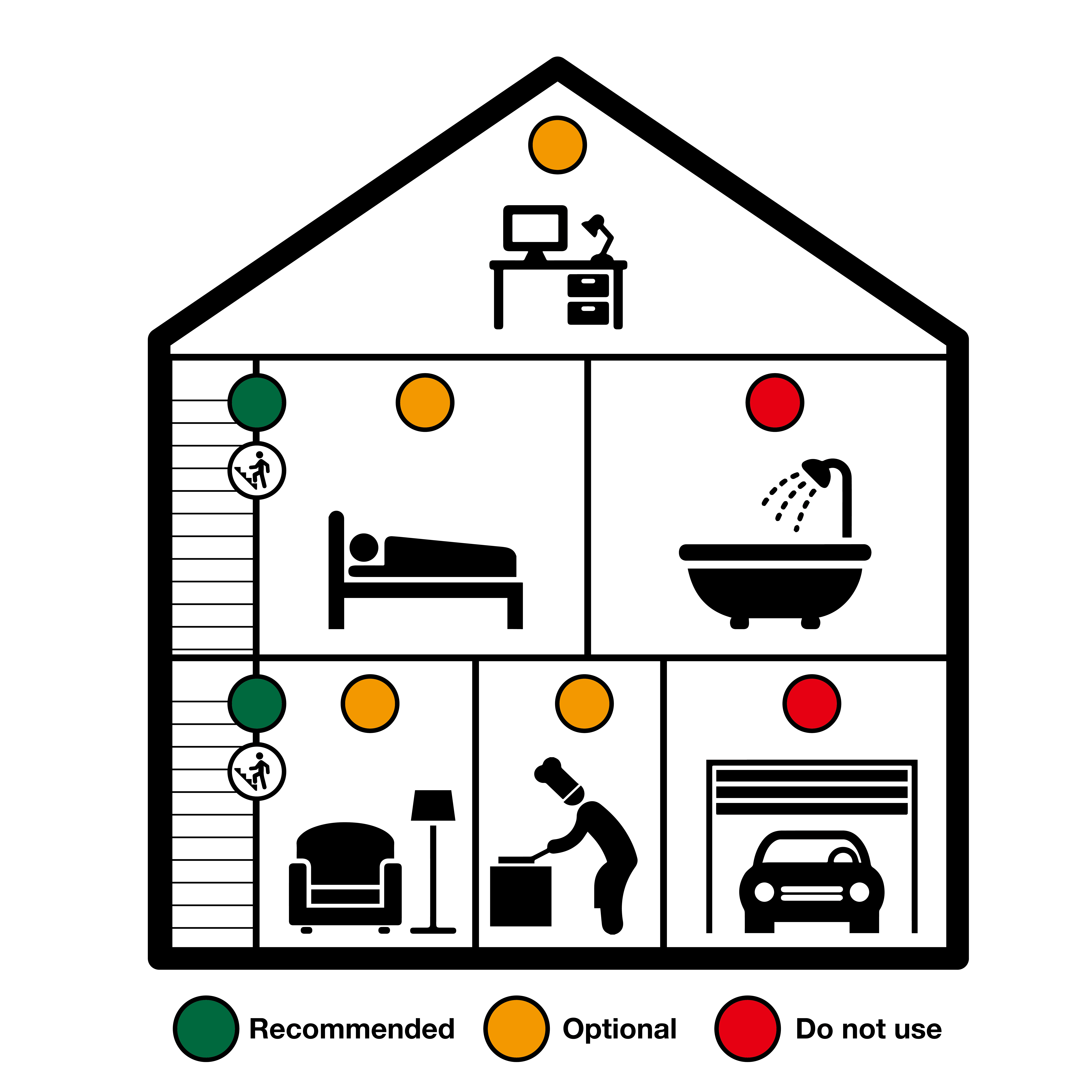EN
Language
All categories
Product ID: 62015049
Smoke Alarm with CE, BSI Global Approved
Contact Now
Description
Features of a Standalone Smoke Detector
A standalone smoke detector is an independent device that operates without being connected to other alarm systems and can detect smoke and emit an alarm on its own.
-
Independent Operation: A standalone smoke detector does not rely on other alarm systems or hardwiring. It is suitable for small spaces or as a supplement to existing security systems.
-
Battery-Powered: Typically powered by batteries, some models also have backup batteries to continue functioning in case of a primary power outage.
-
High Sensitivity: Equipped with highly sensitive sensors, it can quickly detect smoke and trigger an alarm.
-
Loud Alarm: When smoke is detected, it emits an alarm louder than 80 decibels and flashes lights to alert people to take action in a timely manner.
-
Long Standby Time: Some models have a battery standby time of up to 10 years, reducing the hassle of battery replacement.
-
Easy Installation and Maintenance: Easy to install, usually recommended to be mounted on the ceiling or high places to ensure early smoke detection.
Applications
Standalone smoke detectors are suitable for a variety of locations, including:
-
Residential Homes: For bedrooms, hallways, and living rooms.
-
Small Commercial Spaces: Such as internet cafes, dance halls, and coffee shops.
-
Temporary or Mobile Spaces: Like cars, RVs, and hotels.
-
Special-Purpose Locations: For example, kitchens (to remind people to turn off the stove), schools, and libraries.
Safety Standards
Standalone smoke detectors must comply with relevant safety standards:
-
European Standard EN 14604: Applies to smoke detectors in residential and similar environments, requiring a certain level of sensitivity, testing methods, and performance standards.
-
Compliance: Devices that meet the EN 14604 standard can obtain CE certification, proving their high safety and performance for the European market.
Usage Recommendations
-
Correct Installation: It is recommended to install on the ceiling or high places, avoiding areas near steam or cooking appliances to reduce false alarms.
-
Regular Testing: Test the device at least once a month to ensure it is working properly.
-
Battery Replacement: Replace the batteries promptly when you hear the low-battery warning.
-
Cleaning and Maintenance: Regularly clean dust and debris to maintain the device's performance.
The standalone smoke detector, with its independence, high sensitivity, and ease of installation, is an ideal choice for homes and small commercial spaces. It can sound an alarm in the early stages of a fire, providing valuable time for evacuation and fire extinguishing.
Product Description
-
Battery Life: 1 year
-
Power Supply: DC 9V battery operated
-
Detection Technology: Photoelectric chamber for early detection from all directions
-
Alarm Signal: Loud >85dB(A) alarm signal (measured at 3 meters)
-
Alarm Indicator: Flashing red LED
-
Test/Hush Button: Combined Test/Hush button for easy operation
-
Low Battery Signal: Audible low battery warning
-
Battery Replacement: Replaceable battery with options for 1-year, 3-year, or 5-year models
-
Net Weight: ≈ 124g (including battery)
-
Dimensions: Diameter 100mm × Height 37mm
Where Should Smoke Alarms be Installed?
Smoke alarms play a crucial role in early fire detection and can significantly increase the chances of safe evacuation. Proper placement is essential to ensure maximum effectiveness. Here are the recommended locations for installing smoke alarms:
-
Every Level of the Home: Install smoke alarms on each level of your home, including basements and attics. Fires can start anywhere, and having alarms on every floor ensures early detection regardless of the fire's origin.
-
Outside Sleeping Areas: Place smoke alarms in hallways outside bedrooms and sleeping areas. This is critical because people are most vulnerable while asleep and may not hear alarms located inside rooms. Alarms in these areas can provide early warning to help wake occupants.
-
Inside Bedrooms: Install smoke alarms inside each bedroom. This is especially important for individuals who sleep with their doors closed, as smoke may not reach the hallway alarm quickly enough.
-
Common Areas: Install smoke alarms in common living areas such as living rooms, family rooms, and kitchens. Kitchens are particularly important as they are a common source of fires.
-
Escape Paths: Consider placing smoke alarms along your planned escape routes. This can help guide you to safety in low-visibility conditions caused by smoke.
General Installation Tips:
-
Ceiling Placement: If possible, install smoke alarms in the center of the ceiling. This location ensures the best detection of rising smoke.
-
Wall Placement: If ceiling installation is not feasible, place the alarm on the wall, ensuring it is within 12 inches (30 cm) of the ceiling. Smoke rises, so placing it near the ceiling maximizes its effectiveness.
-
Avoid Corners: Avoid placing smoke alarms in corners or near windows, vents, or doors, as these locations can disrupt airflow and delay smoke detection.
-
Follow Manufacturer’s Instructions: Always follow the manufacturer’s guidelines for installation and maintenance. Different models may have specific requirements for optimal performance.
Additional Considerations:
-
Interconnected Alarms: If possible, install interconnected smoke alarms that sound simultaneously when one is triggered. This ensures that everyone in the home is alerted, regardless of their location.
-
Regular Testing and Maintenance: Test smoke alarms monthly and replace batteries at least once a year (or as recommended by the manufacturer). Replace the entire unit every 10 years or as specified by the manufacturer.
-
Avoid False Alarms: While it’s important to place alarms in strategic locations, avoid areas prone to frequent false alarms, such as near cooking appliances or bathrooms, where steam can trigger the alarm.
By following these guidelines, you can ensure that your smoke alarms are optimally placed to provide early warning and protection for you and your family in the event of a fire.
Applicable place

Contact Now
Please Send Message
${currentPro.title}

















